A tropical climate is climate characteristic of the tropics; that is from the equator to the 25 North and South latitude. Most areas within the tropics remain relatively hot all year long (warmer than 18 °C) because of the effect of the small changes in sun angle which cause intense sunlight that also cause heavy rains. The reason of that such heavy rain is active vertical uplift and convection process, which through immense amounts of sunlight cause the evaporation of a great deal of water, which falls back as rain, often in heavy thunder storms nearly every day. Storms are therefore most common in midday when the sun is at its strongest. In tropical climates, variations of different seasons are dominated by rainfall and there are often only two seasons as wet season and dry season.
Within the tropical climate zone, there are three varieties of tropical climates based on precipitation:
1- Tropical rainforest climate: normally occur close to the equator, within 10 or 15 degrees North and South latitude of the equator. This climate is dominated by calm winds and frequent, heavy rainfall. In tropical rain forest climates, there is either no dry season or at most two dry months. Some of the places with this climate are monotonously wet throughout the year.
2- Tropical monsoon climate: results from the monsoon winds which change direction according to the season. There is short but distinct dry season. Under the influence of the drier winds at the time of low sun (winter)
3- Tropical savanna climate: in higher tropical latitudes between 15 and 20 North and South at tropical grasslands rather than thick jungle. There is long dry period, less annual rainfall.
Very large areas conform the definition of a tropical climate are Amazon Basin of South America (Brazil), Congo Basin of West Africa and Southeast Asia (Malaysia, Indonesia).
The main stresses of this climate are humidity levels, temperatures, solar radiation and wind. Humidity reduces cooling via evaporation as the air is already saturated, so by ventilating the space, the saturated air is removed, increasing the rate of evaporation and convection that dissipates heat from the body and building structure. To provide that, structures in tropical-humid area are built with scaffold, light wall with wide openings and pointed roof within openings.
Other technique for cooling and reducing solar gains is solar shading. For that, tropical vernacular homes were located in areas of dense vegetation with overhanging trees that could shade the building whilst creating cooler micro climate. Also deep veranda shadings are used to eliminate low angle sun radiation. Solar gains were reduced by large roof overhang and used verandahs. Both techniques allowed windows to remain open so that ventilation could still infiltrate the building during rain periods
A high ceiling, typical in tropical vernacular, shows an understanding of the stack effect. Hot air rises and is infiltrated out via ventilation roof joints. On the floor plan, minimum internal partitions created an easy passage for cross ventilation by reducing friction. This technique is repeated beneath the house by raising it on stilts to also gain air flow under. It is not only to catch winds of higher velocity, but also by shading the ground the air underneath was cooled and drawn up through the floorboards. Initial idea of elevating the building from ground is prevent flooding.
In all instances, local materials were used, what was closest to hand and readily available. This was typically timer and palms. Timber, a lightweight material was generally used for walls and floors and thatch was used on the roof, both providing good insulation from solar gains being materials of a low thermal capacity.

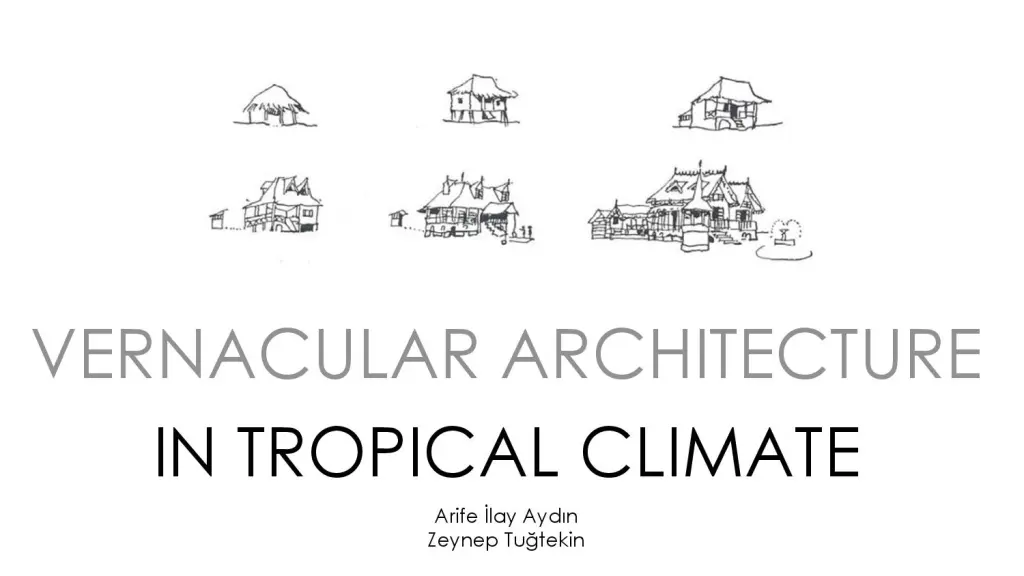


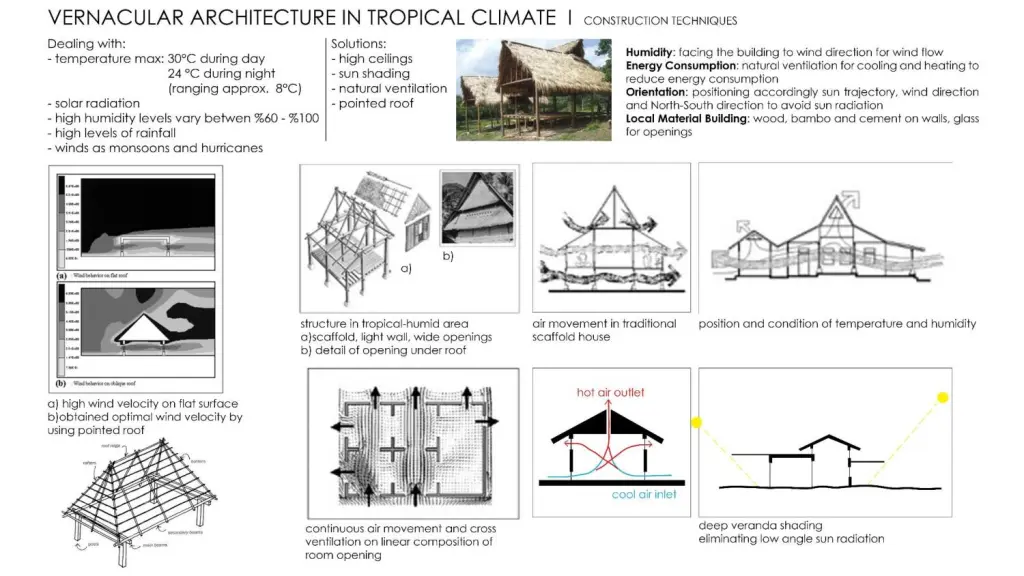
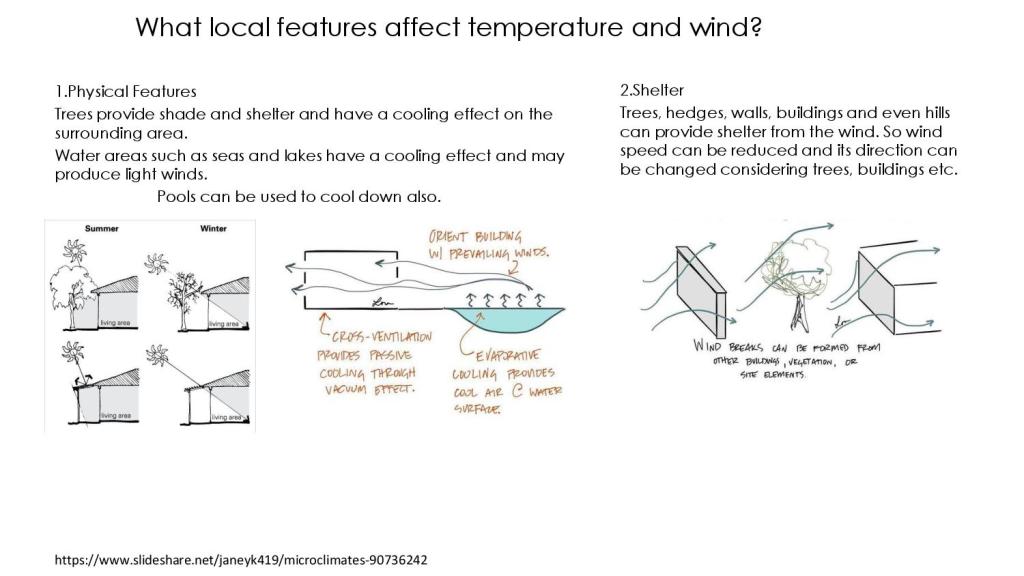
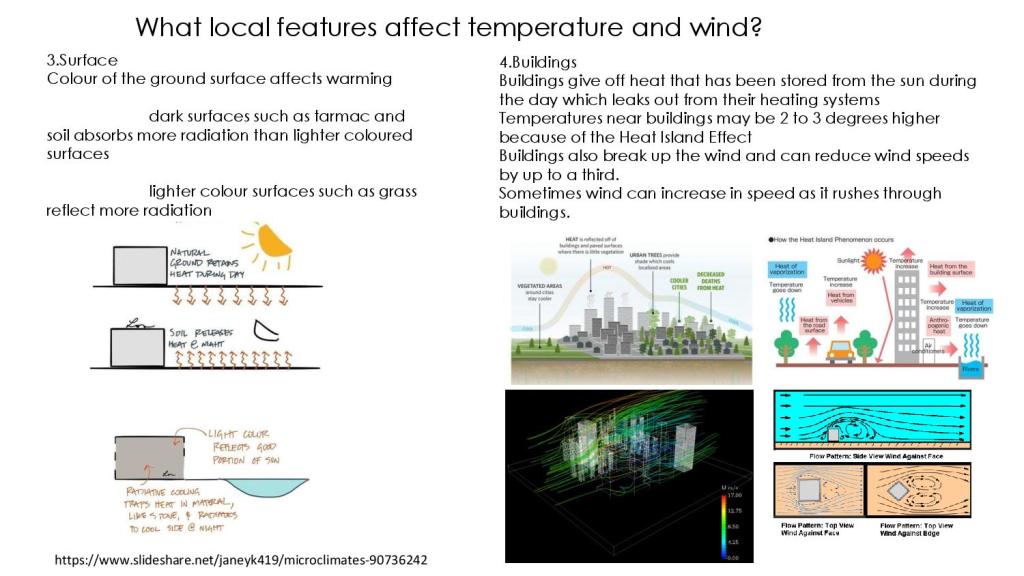
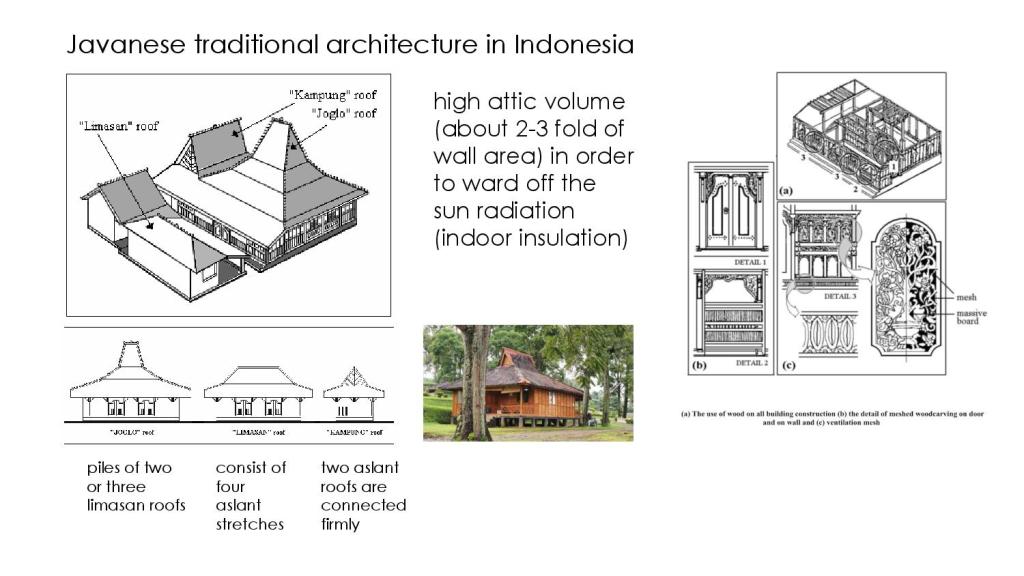
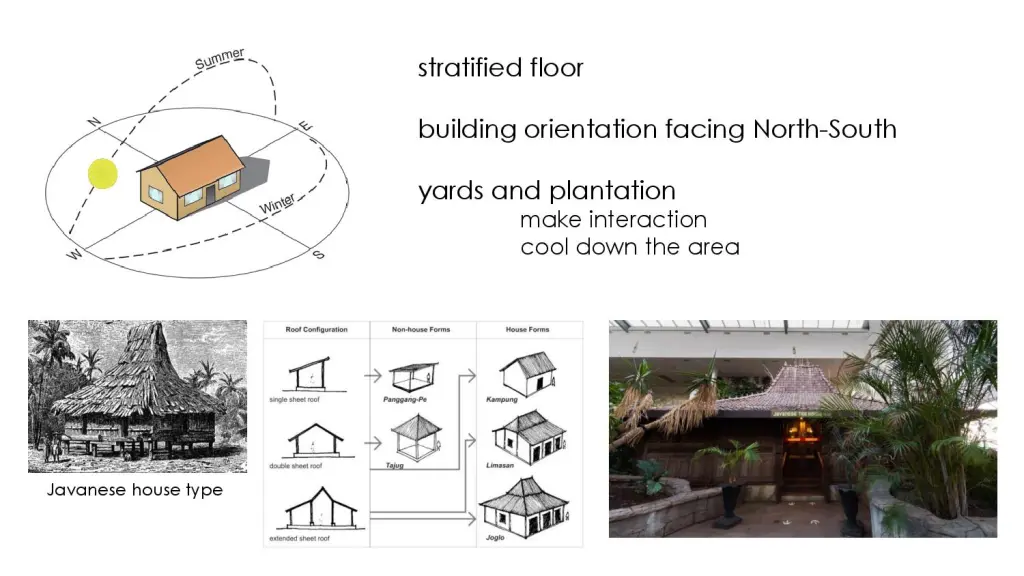
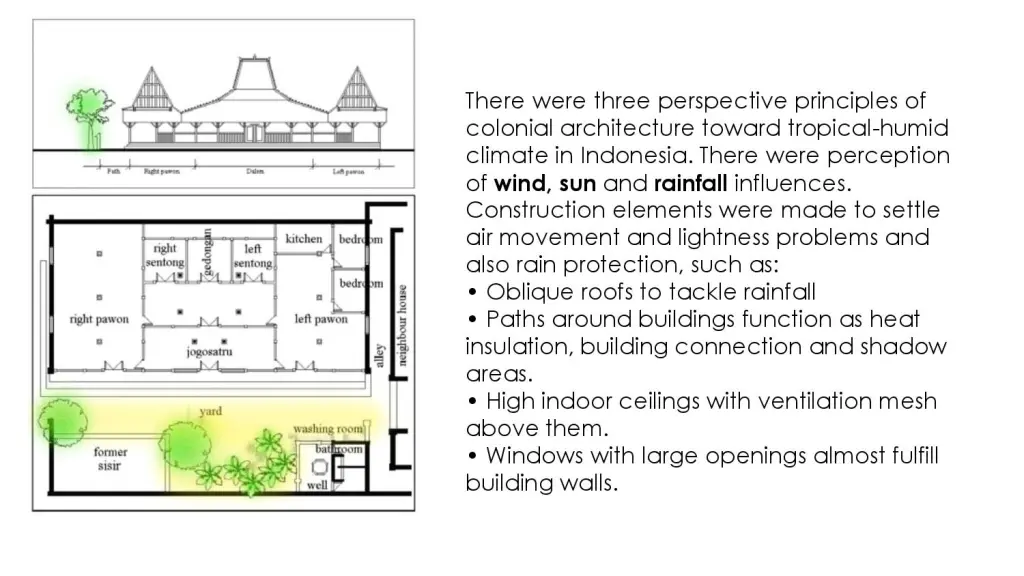
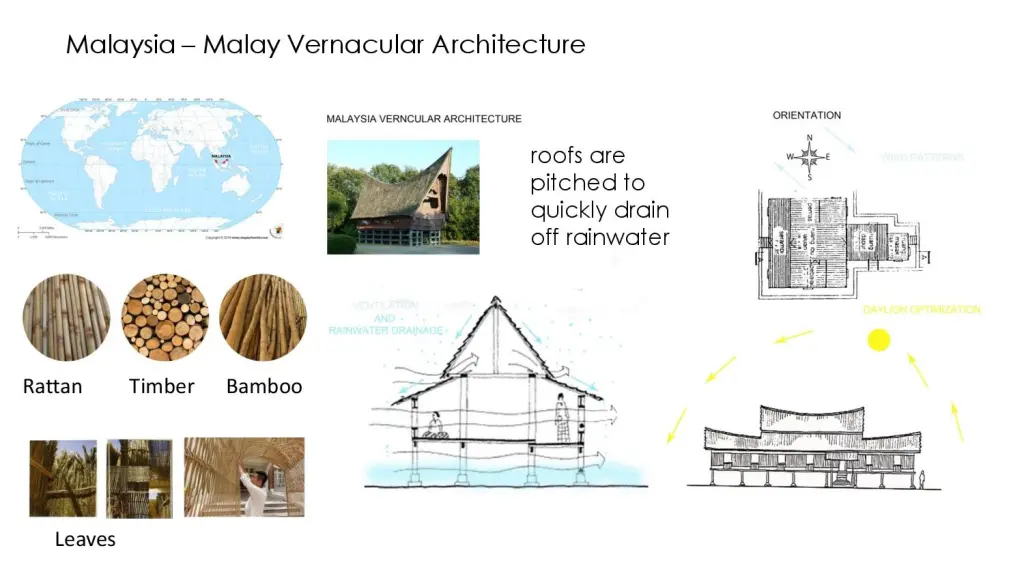
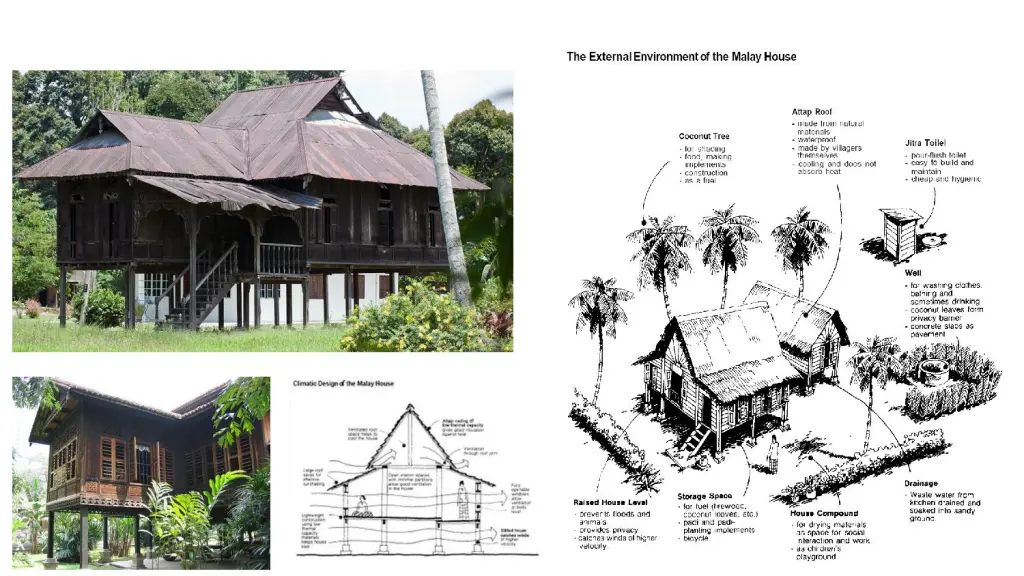
Very nice work, Zeynep.
LikeLiked by 1 person